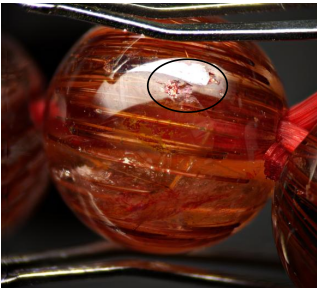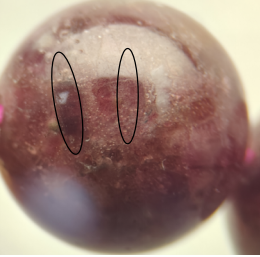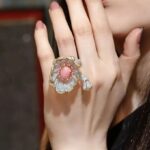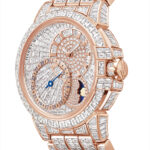Jewelry dazzles and captivates, its vibrant colors and brilliance enchanting the world and illuminating time itself. It carries the weight of history and cultural heritage. In this radiant realm, jewelry is not merely an accessory but an art form, an enduring legend.
As we follow modern trends, we observe a rapidly growing demand for natural jewelry. However, the long-term mining of high-quality gemstone resources has led to a sharp decrease in production, resulting in an increasingly acute supply-demand imbalance in the jewelry market for premium gemstones, driving prices upward.
To address this disparity and reveal the potential beauty of gemstones, research into artificial enhancement techniques has intensified. The market now sees more mature treatment technologies, with diverse methods emerging.
While these techniques were initially developed to alleviate the current supply-demand conflict in the jewelry market and provide consumers with more options, some unscrupulous merchants, in their blind pursuit of sales, have failed to disclose the true condition of the gemstones, causing losses to consumers.
How can one determine if their jewelry has undergone treatment? Today, we’ll share several methods for identifying treated gemstones.
01
Dyed Silicified Asbestos
Silicified asbestos, scientifically known as silicified amphibole asbestos, is a quartz-based jade formed by the silicification of amphibole asbestos through acidic hydrothermal action. It’s a common variety of jade in the market. Due to its texture and color resembling wood, it’s commercially referred to as “wood grain stone.” In laboratory tests, we’ve discovered instances of dye treatment in silicified asbestos, as shown in the image below.

Visual observation: Clear structure, no significant color abnormalities.


Magnified inspection: Obvious color residue can be seen in surface depressions.

Alcohol test: Lightly rubbing the gemstone’s surface with a cotton swab dipped in alcohol reveals color transfer.
02
Dyed Hair Crystal
Hair crystal, an important member of the quartz family, is primarily composed of silicon dioxide. Transparent quartz containing fibrous, needle-like, thread-like, or radiating inclusions of rutile, tourmaline, or actinolite is commercially known as hair crystal due to its hair-like appearance. During our examinations, we also discovered instances of dyed hair crystal, as shown in the image below.

Sample appearance: Red-colored inclusions visible inside.

Magnified observation: Red dye residue visible in cracks and cavities.
03
Jadeite (Treated)
Jadeite, the king of jade, captivates with its enchanting green hue, exuding elegance and vitality. In the industry, there are sayings like “a thousand types of agate, ten thousand types of jade” and “amateurs look at color, experts look at texture.” Color, being a crucial factor in evaluating jadeite’s value, has always been a primary concern for consumers.
Besides the well-known “C-grade” jadeite (dye-treated jadeite) that alters the color of jadeite, another method of artificially “enhancing” jadeite’s color has quietly emerged in the market: jadeite with colored adhesive backing.
Jadeite with colored adhesive backing primarily appears in mounted jadeite jewelry. Using a fully enclosed setting technique, a layer of colored adhesive is placed between a high-quality colored or colorless jadeite cabochon and the metal setting. Light passing through the jadeite cabochon is reflected by the colored adhesive background, enhancing or altering the jadeite’s color.
In laboratory tests, this type of jadeite is classified as “Jadeite (Treated), Note: Covered with colored film.” The phenomenon is illustrated in the image below.

Sample appearance: Exhibits a rich blue-green color.

Microscopic observation: Viewing from the side, a distinct blue-green colored adhesive is visible at the base.
In addition to these treatment methods, the market previously saw reconstructed gemstones, primarily reconstructed amber and turquoise. Recently, reconstructed tourmaline has also quietly appeared in the market, requiring us to be extra vigilant.
04
Reconstructed Tourmaline
Reconstructed gemstones are created by artificially fusing or compressing fragments or debris of natural gems and jade into a cohesive appearance, sometimes with the addition of binding materials. During our examinations, we also discovered reconstructed tourmaline, as shown in the image below.

Sample appearance: Overall purple-red color with poor luster. Under ultraviolet light, the sample reveals a granular structure.

Microscopic observation:
Tourmaline particles can be seen bonded by adhesive, with numerous air bubbles visible between the particles.
Through these testing cases, we’ve shared some gemstones that are prone to issues in the current market and provided some simple testing methods for reference.
However, due to factors such as gemstone size, environmental conditions, professional knowledge, and improper handling, these methods may not always yield accurate results. For more precise identification, we recommend consulting a professional jewelry laboratory to avoid fraud and financial loss.
Unveiling the Truth: How to Detect Treated Gemstones in Your Jewelry Collection
Tweet





